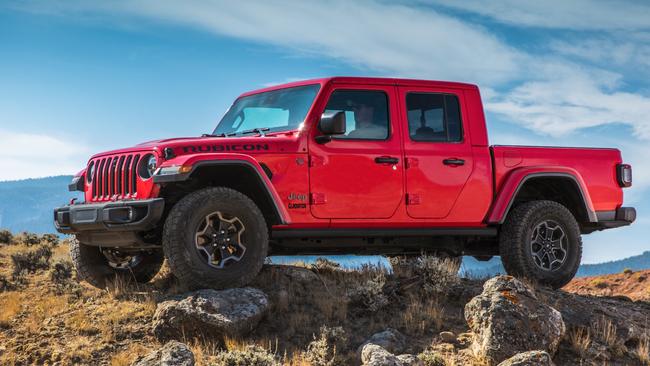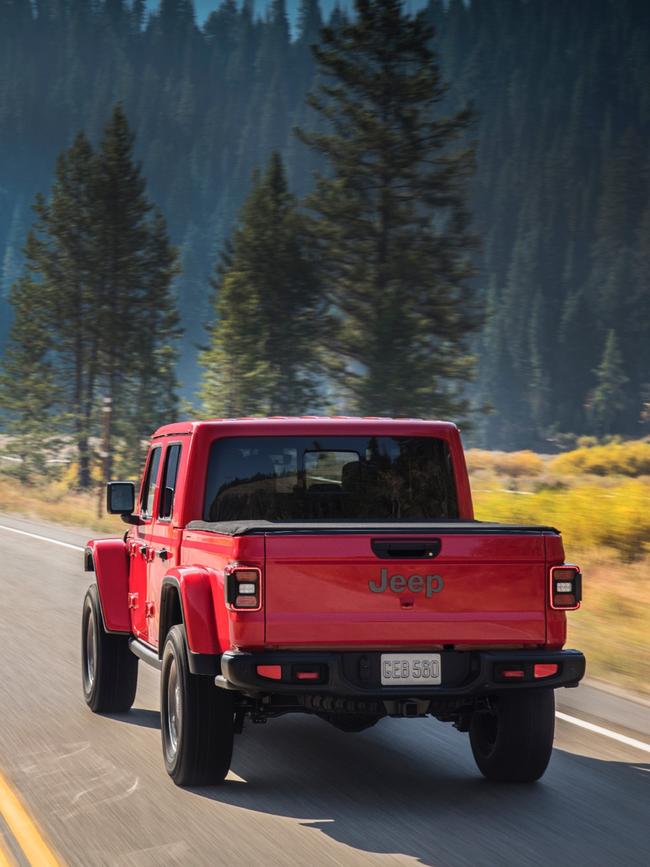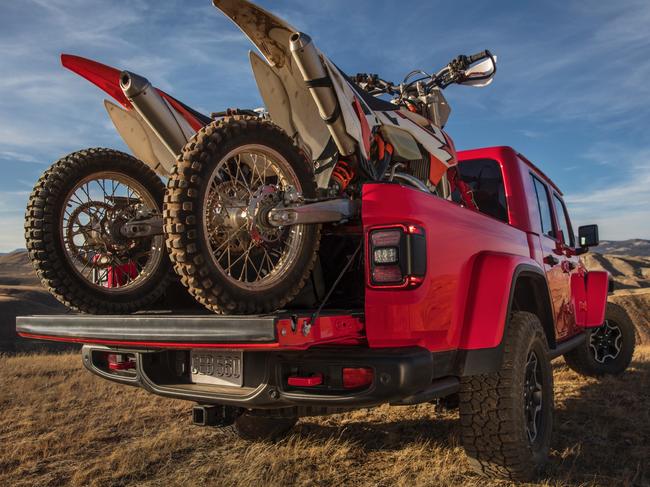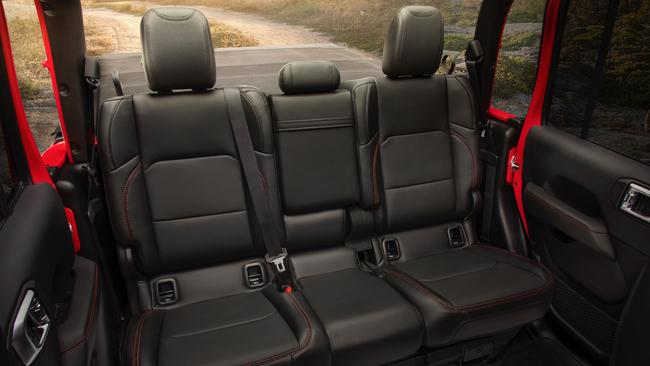Jeep Gladiator Rubicon review: Don’t let it fool you
Truly, this Jeep is a unique ute, and not just because it looks like it was designed by a man who’d been working at Tonka Trucks.

If you were to build a giant, gauche-awful mega-mansion, the kind that makes people involuntarily cover their mouths when looking upon it, I’d consider you just one of the many sad, shouty show-offs in this world. But if I were then invited into your home and discovered that the design had rendered all of the rooms too small to live in, and the windows too tiny to let light in, I’d think you an irredeemable idiot.
If you had such a house, of course, there would definitely be a Jeep Gladiator, or two, in your vast, circular driveway.

Truly, this Jeep is a unique ute, and not just because it looks like it was designed by a man who’d been working at Tonka Trucks for years and decided to branch out, and up, and sideways. At first glimpse – and I took mine between interlocked fingers because I found it disturbing – the Gladiator looks enormous, and so long (it’s 5.6m in length; a Toyota LandCruiser is 4.95m) that it seems as likely to fit in an Australian car space as a crocodile is to relax in a bucket. And then you climb up and into it, an ungainly experience that made me look like an old man attempting a front-facing Fosbury flop, and you discover that it is stunningly, nay stupidly, tiny inside. The windscreen is the size of an ironing board, the windows are like lunchbox lids and there’s not even any space in the footwell to rest your left foot. This is a particularly large oversight because the ride of this Gladiator, on its enormous, chunky tyres, is of such violent enthusiasm that you really do need to brace yourself at times.


Escaping the overwhelming sense of claustrophobia can be tricky – partly because the Jeep designers decided to hide the switches for the windows in the least logical place they could think of – but fortunately you can remove the front half of the roof, which does feel very Californian once you’ve achieved it.
You’ll probably not be surprised to hear that this makes the Gladiator the world’s only convertible dual-cab pick-up truck. It’s as if no one else ever thought such a thing was necessary, or useful, isn’t it? Although I must admit that, on a scorching hot day, driving topless did make me feel strangely Hasselhoff.
There is, of course, no space inside the Gladiator to store the two big, chunky roof panels once you’ve done the heavy, overhead lifting of removing them, so you’re forced to either let them slide around in your enormous rear tray, or test your luck by leaving them at home. (No one who lives in Melbourne should try this. Ever.) I wouldn’t say the system Jeep has come up with for putting the roof back in place once it inevitably does start raining is stupid, but only because I’m too polite to do so. Perhaps if I was a tradie, or even lightly competent at doing things with my hands, it would have been easier, but is a builder or a sparky actually likely to buy a Gladiator for work? I’d argue it’s a no, unless they happen to work on the Colosseum in Rome.

Despite its useful 1531mm length, the rear tray is too high for practical loading and unloading, the 3.6-litre V6 Pentastar engine seems to lack the kind of hairy-chested grunt a proper man would desire, and even Jeep itself argues that this is a “lifestyle vehicle” and not a “workhorse”. I have pondered whose lifestyle it’s designed for, but the only answer I’ve come up with so far is Hobbits.
Frankly, even those fearless little creatures would be curling up their hairy toes while driving this Gladiator, because the steering is vague to the point of alarming. Perhaps it’s designed so that it won’t kick back violently when you’re clambering over boulders – and I have no doubt that this Rubicon variant I was driving, like all of them, is hugely capable and unbreakable off-road – but around town it feels vague to the point of somnolent.
I once asked a Jeep employee why their steering is always so awful and they responded that it was how their customers like it, to which I suggested that perhaps they’d like to give their customers good steering and see if they liked that also. I did read one strangely defensive review of the Gladiator that suggested that the fact the steering is vague at high speeds and needs constant adjustment would, at least, “help you keep alert”. I prefer coffee.

Despite my many misgivings (it’s too heavy, at 2242kg; the transmission is jerky; it drinks too much fuel; $87,250, you must be joking), I must admit I was struck by how many people told me they loved the look of “that big red thing” in front of my house. In each case, I asked these people to take a few steps back and then inquired whether they could tell me how many fingers I was holding up (just one, the middle one). If they continued to argue with me about the Gladiator’s goodness, I would lock them inside it for a few minutes, which made them cover their mouths in shock, every time.
Jeep Gladiator Rubicon
Engine: 3.6-litre six-cylinder (209kW/347Nm)
Fuel economy: 12.4 litres per 100km (Ha! I say, Ha!)
Transmission: Eight-speed automatic, all-wheel drive
Price: $87,250
Rating: 1 out of 5

To join the conversation, please log in. Don't have an account? Register
Join the conversation, you are commenting as Logout